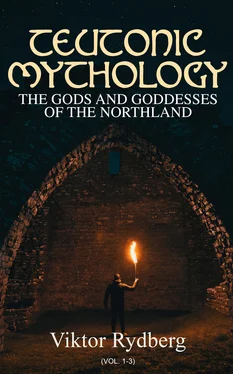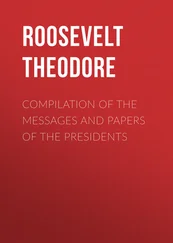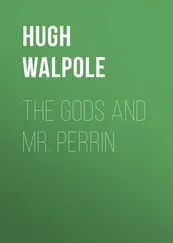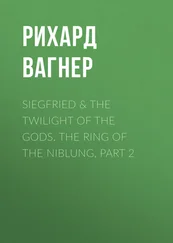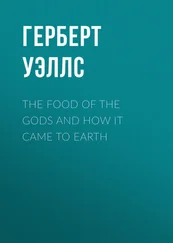Viktor Rydberg - Teutonic Mythology - The Gods and Goddesses of the Northland (Vol. 1-3)
Здесь есть возможность читать онлайн «Viktor Rydberg - Teutonic Mythology - The Gods and Goddesses of the Northland (Vol. 1-3)» — ознакомительный отрывок электронной книги совершенно бесплатно, а после прочтения отрывка купить полную версию. В некоторых случаях можно слушать аудио, скачать через торрент в формате fb2 и присутствует краткое содержание. Жанр: unrecognised, на английском языке. Описание произведения, (предисловие) а так же отзывы посетителей доступны на портале библиотеки ЛибКат.
- Название:Teutonic Mythology: The Gods and Goddesses of the Northland (Vol. 1-3)
- Автор:
- Жанр:
- Год:неизвестен
- ISBN:нет данных
- Рейтинг книги:4 / 5. Голосов: 1
-
Избранное:Добавить в избранное
- Отзывы:
-
Ваша оценка:
- 80
- 1
- 2
- 3
- 4
- 5
Teutonic Mythology: The Gods and Goddesses of the Northland (Vol. 1-3): краткое содержание, описание и аннотация
Предлагаем к чтению аннотацию, описание, краткое содержание или предисловие (зависит от того, что написал сам автор книги «Teutonic Mythology: The Gods and Goddesses of the Northland (Vol. 1-3)»). Если вы не нашли необходимую информацию о книге — напишите в комментариях, мы постараемся отыскать её.
One of Rydberg's mythological theories developed in this book is that of a vast World Mill which rotates the heavens, which he believed was an integral part of Old Norse mythic cosmology.
Teutonic Mythology: The Gods and Goddesses of the Northland (Vol. 1-3) — читать онлайн ознакомительный отрывок
Ниже представлен текст книги, разбитый по страницам. Система сохранения места последней прочитанной страницы, позволяет с удобством читать онлайн бесплатно книгу «Teutonic Mythology: The Gods and Goddesses of the Northland (Vol. 1-3)», без необходимости каждый раз заново искать на чём Вы остановились. Поставьте закладку, и сможете в любой момент перейти на страницу, на которой закончили чтение.
Интервал:
Закладка:
IV. THE MYTH IN REGARD TO THE LOWER WORLD.
44. MIDDLE AGE SAGAS WITH ROOTS IN THE MYTH CONCERNING THE LOWER WORLD. ERIK VIDFORLE'S SAGA.
45. MIDDLE AGE SAGAS (continued). ICELANDIC SOURCES IN REGARD TO GUDMUND, KING ON THE GLITTERING PLAINS.
46. MIDDLE AGE SAGAS (continued). SAXO CONCERNING THIS SAME GUDMUND, RULER OF THE LOWER WORLD.
47. MIDDLE AGE SAGAS (continued). FJALLERUS AND HADINGUS (HADDING) IN THE LOWER WORLD.
48. MIDDLE AGE SAGAS (continued). A FRISIAN SAGA IN ADAM OF BREMEN.
49. ANALYSIS OF THE SAGAS MENTIONED IN NOS. 44–48.
50. ANALYSIS OF THE SAGAS MENTIONED IN NOS. 44–48. THE QUESTION IN REGARD TO THE IDENTIFICATION OF ODAINSAKER.
51. GUDMUND'S IDENTITY WITH MIMER.
52. MIMER'S GROVE. LIF AND LEIFTHRASER.
FOOTNOTES:
I.
INTRODUCTION.
Table of Contents
A. THE ANCIENT ARYANS.
Table of Contents
1.
THE WORDS GERMAN AND GERMANIC.
Table of Contents
Already at the beginning of the Christian era the name Germans was applied by the Romans and Gauls to the many clans of people whose main habitation was the extensive territory east of the Rhine, and north of the forest-clad Hercynian Mountains. That these clans constituted one race was evident to the Romans, for they all had a striking similarity in type of body; moreover, a closer acquaintance revealed that their numerous dialects were all variations of the same parent language, and finally, they resembled each other in customs, traditions, and religion. The characteristic features of the physical type of the Germans were light hair, blue eyes, light complexion, and tallness of stature as compared with the Romans.
Even the saga-men, from whom the Roman historian Tacitus gathered the facts for his Germania —an invaluable work for the history of civilisation—knew that in the so-called Svevian Sea, north of the German continent, lay another important part of Germany, inhabited by Sviones, a people divided into several clans. Their kinsmen on the continent described them as rich in weapons and fleets, and in warriors on land and sea (Tac., Germ. , 44). This northern sea-girt portion of Germany is called Scandinavia—Scandeia by other writers of the Roman Empire; and there can be no doubt that this name referred to the peninsula which, as far back as historical monuments can be found, has been inhabited by the ancestors of the Swedes and the Norwegians. I therefore include in the term Germans the ancestors of both the Scandinavian and Gothic and German ( tyske ) peoples. Science needs a sharply-defined collective noun for all these kindred branches sprung from one and the same root, and the name by which they make their first appearance in history would doubtless long since have been selected for this purpose had not some of the German writers applied the terms German and Deutsch as synonymous. This is doubtless the reason why Danish authors have adopted the word "Goths" to describe the Germanic nation. But there is an important objection to this in the fact that the name Goths historically is claimed by a particular branch of the family—that branch, namely, to which the East and West Goths belonged, and in order to avoid ambiguity, the term should be applied solely to them. It is therefore necessary to re-adopt the old collective name, even though it is not of Germanic origin, the more so as there is a prospect that a more correct use of the words German and Germanic is about to prevail in Germany itself, for the German scholars also feel the weight of the demand which science makes on a precise and rational terminology. [1]
2.
THE ARYAN FAMILY OF LANGUAGES.
Table of Contents
It is universally known that the Teutonic dialects are related to the Latin, the Greek, the Slavic, and Celtic languages, and that the kinship extends even beyond Europe to the tongues of Armenia, Irania, and India. The holy books ascribed to Zoroaster, which to the priests of Cyrus and Darius were what the Bible is to us; Rigveda's hymns, which to the people dwelling on the banks of the Ganges are God's revealed word, are written in a language which points to a common origin with our own. However unlike all these kindred tongues may have grown with the lapse of thousands of years, still they remain as a sharply-defined group of older and younger sisters as compared with all other language groups of the world. Even the
Semitic languages are separated therefrom by a chasm so broad and deep that it is hardly possible to bridge it.
This language-group of ours has been named in various ways. It has been called the Indo-Germanic, the Indo-European, and the Aryan family of tongues. I have adopted the last designation. The Armenians, Iranians, and Hindoos I call the Asiatic Aryans; all the rest I call the European Aryans.
Certain it is that these sister-languages have had a common mother, the ancient Aryan speech, and that this has had a geographical centre from which it has radiated. (By such an ancient Aryan language cannot, of course, be meant a tongue stereotyped in all its inflections, like the literary languages of later times, but simply the unity of those dialects which were spoken by the clans dwelling around this centre of radiation.) By comparing the grammatical structure of all the daughters of this ancient mother, and by the aid of the laws hitherto discovered in regard to the transition of sounds from one language to another, attempts have been made to restore this original tongue which many thousand years ago ceased to vibrate. These attempts cannot, of course, in any sense claim to reproduce an image corresponding to the lost original as regards syntax and inflections. Such a task would be as impossible as to reconstruct, on the basis of all the now spoken languages derived from the Latin, the dialect used in Latium. The purpose is simply to present as faithful an idea of the ancient tongue as the existing means permit.
In the most ancient historical times Aryan-speaking people were found only in Asia and Europe. In seeking for the centre and the earliest conquests of the ancient Aryan language, the scholar may therefore keep within the limits of these two continents, and in Asia he may leave all the eastern and the most of the southern portion out of consideration, since these extensive regions have from prehistoric times been inhabited by Mongolian and allied tribes, and may for the present be regarded as the cradle of these races. It may not be necessary to remind the reader that the question of the original home of the ancient Aryan tongue is not the same as the question in regard to the cradle of the Caucasian race. The white race may have existed, and may have been spread over a considerable portion of the old world, before a language possessing the peculiarities belonging to the Aryan had appeared; and it is a known fact that southern portions of Europe, such as the Greek and Italian peninsulas, were inhabited by white people before they were conquered by Aryans.
3.
THE HYPOTHESIS CONCERNING THE ASIATIC ORIGIN OF THE ARYANS.
Table of Contents
When the question of the original home of the Aryan language and race was first presented, there were no conflicting opinions on the main subject. [2]All who took any interest in the problem referred to Asia as the cradle of the Aryans. Asia had always been regarded as the cradle of the human race. In primeval time, the yellow Mongolian, the black African, the American redskin, and the fair European had there tented side by side. From some common centre in Asia they had spread over the whole surface of the inhabited earth. Traditions found in the literatures of various European peoples in regard to an immigration from the East supported this view. The progenitors of the Romans were said to have come from Troy. The fathers of the Teutons were reported to have immigrated from Asia, led by Odin. There was also the original home of the domestic animals and of the cultivated plants. And when the startling discovery was made that the sacred books of the Iranians and Hindoos were written in languages related to the culture languages of Europe, when these linguistic monuments betrayed a wealth of inflections in comparison with which those of the classical languages turned pale, and when they seemed to have the stamp of an antiquity by the side of which the European dialects seemed like children, then what could be more natural than the following conclusion: The original form has been preserved in the original home; the farther the streams of emigration got away from this home, the more they lost on the way of their language and of their inherited view of the world; that is, of their mythology, which among the Hindoos seemed so original and simple as if it had been watered by the dews of life's dawn.
Читать дальшеИнтервал:
Закладка:
Похожие книги на «Teutonic Mythology: The Gods and Goddesses of the Northland (Vol. 1-3)»
Представляем Вашему вниманию похожие книги на «Teutonic Mythology: The Gods and Goddesses of the Northland (Vol. 1-3)» списком для выбора. Мы отобрали схожую по названию и смыслу литературу в надежде предоставить читателям больше вариантов отыскать новые, интересные, ещё непрочитанные произведения.
Обсуждение, отзывы о книге «Teutonic Mythology: The Gods and Goddesses of the Northland (Vol. 1-3)» и просто собственные мнения читателей. Оставьте ваши комментарии, напишите, что Вы думаете о произведении, его смысле или главных героях. Укажите что конкретно понравилось, а что нет, и почему Вы так считаете.
